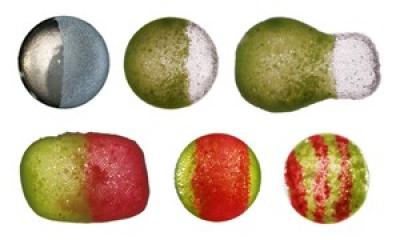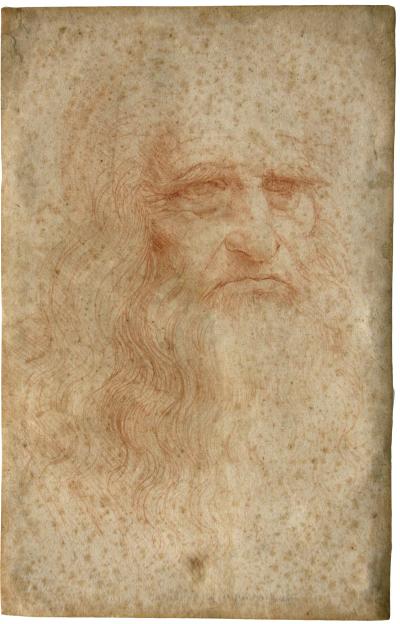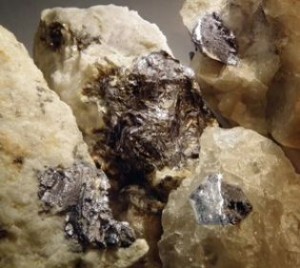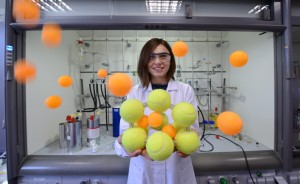This is the second such conference and they are issuing a call for speakers; the first was held in New Zealand in 2014 (my April 8, 2014 post offers an overview of the then proposed science advice conference). Thanks to David Bruggeman and his Feb. 23, 2016 posting (on the Pasco Phronesis blog) for the information about this latest one (Note: A link has been removed),
The International Network for Global Science Advice (INGSA) is holding its second global conference in Brussels this September 29 and 30, in conjunction with the European Commission. The organizers have the following goals for the conference:
- Identify core principles and best practices, common to structures providing scientific advice for governments worldwide.
- Identify practical ways to improve the interaction of the demand and supply side of scientific advice.
- Describe, by means of practical examples, the impact of effective science advisory processes.
Here’s a little more about the conference from its webpage on the INGSA website,
Science and Policy-Making: towards a new dialogue
29th – 30th September 2016, Brussels, Belgium
Call for suggestions for speakers for the parallel sessions
BACKGROUND:
“Science advice has never been in greater demand; nor has it been more contested.”[1] The most complex and sensitive policy issues of our time are those for which the available scientific evidence is ever growing and multi-disciplined, but still has uncertainties. Yet these are the very issues for which scientific input is needed most. In this environment, the usefulness and legitimacy of expertise seems obvious to scientists, but is this view shared by policy-makers?
OBJECTIVES:
A two-day conference will take place in Brussels, Belgium, on Thursday 29th and Friday 30th September 2016. Jointly organised by the European Commission and the International Network for Government Science Advice (INGSA), the conference will bring together users and providers of scientific advice on critical, global issues. Policy-makers, leading practitioners and scholars in the field of science advice to governments, as well as other stakeholders, will explore principles and practices in a variety of current and challenging policy contexts. It will also present the new Scientific Advice Mechanism [SAM] of the European Commission [emphasis mine; I have more about SAM further down in the post] to the international community. Through keynote lectures and plenary discussions and topical parallel sessions, the conference aims to take a major step towards responding to the challenge best articulated by the World Science Forum Declaration of 2015:
“The need to define the principles, processes and application of science advice and to address the theoretical and practical questions regarding the independence, transparency, visibility and accountability of those who receive and provide advice has never been more important. We call for concerted action of scientists and policy-makers to define and promulgate universal principles for developing and communicating science to inform and evaluate policy based on responsibility, integrity, independence, and accountability.”
The conference seeks to:
Identify core principles and best practices, common to structures providing scientific advice for governments worldwide.
Identify practical ways to improve the interaction of the demand and supply side of scientific advice.
Describe, by means of practical examples, the impact of effective science advisory processes.The Programme Committee comprises:
Eva Alisic, Co-Chair of the Global Young Academy
Tateo Arimoto, Director of Science, Technology and Innovation Programme; The Japanese National Graduate Institute for Policy Studies
Peter Gluckman, Chair of INGSA and Prime Minister’s Chief Science Advisor, New Zealand (co-chair)
Robin Grimes, UK Foreign Office Chief Scientific Adviser
Heide Hackmann, International Council for Science (ICSU)
Theodoros Karapiperis, European Parliament – Head of Scientific Foresight Unit (STOA), European Parliamentary Research Service (EPRS) – Science and Technology Options Assessment Panel
Johannes Klumpers, European Commission, Head of Unit – Scientific Advice Mechanism (SAM) (co-chair)
Martin Kowarsch, Head of the Working Group Scientific assessments, Ethics and Public Policy, Mercator Research Institute on Global Commons and Climate Change
David Mair, European Commission – Joint Research Centre (JRC)
Rémi Quirion, Chief Scientist, Province of Québec, Canada
Flavia Schlegel, UNESCO Assistant Director-General for the Natural Sciences
Henrik Wegener, Executive Vice President, Chief Academic Officer, Provost at Technical University of Denmark, Chair of the EU High Level Group of Scientific Advisors
James Wilsdon, Chair of INGSA, Professor of Research Policy, Director of Impact & Engagement, University of Sheffield
FormatThe conference will be a combination of plenary lectures and topical panels in parallel (concurrent) sessions outlined below. Each session will include three speakers (15 minute address with 5 minute Q & A each) plus a 30 minute moderated discussion.
Parallel Session I: Scientific advice for global policy
The pathways of science advice are a product of a country’s own cultural history and will necessarily differ across jurisdictions. Yet, there is an increasing number of global issues that require science advice. Can scientific advice help to address issues requiring action at international level? What are the considerations for providing science advice in these contexts? What are the examples from which we can learn what works and what does not work in informing policy-making through scientific advice?
Topics to be addressed include:
Climate Change – Science for the Paris Agreement: Did it work?
Migration: How can science advice help?
Zika fever, dementia, obesity etc.; how can science advice help policy to address the global health challenges?Parallel Session II: Getting equipped – developing the practice of providing scientific advice for policy
The practice of science advice to public policy requires a new set of skills that are neither strictly scientific nor policy-oriented, but a hybrid of both. Negotiating the interface between science and policy requires translational and navigational skills that are often not acquired through formal training and education. What are the considerations in developing these unique capacities, both in general and for particular contexts? In order to be best prepared for informing policy-making, up-coming needs for scientific advice should ideally be anticipated. Apart from scientific evidence sensu stricto, can other sources such as the arts, humanities, foresight and horizon scanning provide useful insights for scientific advice? How can scientific advice make best use of such tools and methods?
Topics to be addressed include:
How to close the gap between the need and the capacity for science advice in developing countries with limited or emerging science systems?
What skills do scientists and policymakers need for a better dialogue?
Foresight and science advice: can foresight and horizon scanning help inform the policy agenda?Parallel Session III: Scientific advice for and with society
In many ways, the practice of science advice has become a key pillar in what has been called the ‘new social contract for science[2]’. Science advice translates knowledge, making it relevant to society through both better informed policy and by helping communities and their elected representatives to make better informed decisions about the impacts of technology. Yet providing science advice is often a distributed and disconnected practice in which academies, formal advisors, journalists, stakeholder organisations and individual scientists play an important role. The resulting mix of information can be complex and even contradictory, particularly as advocate voices and social media join the open discourse. What considerations are there in an increasingly open practice of science advice?
Topics to be addressed include:
Science advice and the media: Lost in translation?
Beyond the ivory tower: How can academies best contribute to science advice for policy?
What is the role of other stakeholders in science advice?Parallel Session IV: Science advice crossing borders
Science advisors and advisory mechanisms are called upon not just for nationally-relevant advice, but also for issues that increasingly cross borders. In this, the importance of international alignment and collaborative possibilities may be obvious, but there may be inherent tensions. In addition, there may be legal and administrative obstacles to transnational scientific advice. What are these hurdles and how can they be overcome? To what extent are science advisory systems also necessarily diplomatic and what are the implications of this in practice?
Topics to be addressed include:
How is science advice applied across national boundaries in practice?
What support do policymakers need from science advice to implement the Sustainable Development Goals in their countries?
Science Diplomacy/Can Scientists extend the reach of diplomats?Call for Speakers
The European Commission and INGSA are now in the process of identifying speakers for the above conference sessions. As part of this process we invite those interested in speaking to submit their ideas. Interested policy-makers, scientists and scholars in the field of scientific advice, as well as business and civil-society stakeholders are warmly encouraged to submit proposals. Alternatively, you may propose an appropriate speaker.
The conference webpage includes a form should you wish to submit yourself or someone else as a speaker.
New Scientific Advice Mechanism of the European Commission
For anyone unfamiliar with the Scientific Advice Mechanism (SAM) mentioned in the conference’s notes, once Anne Glover’s, chief science adviser for the European Commission (EC), term of office was completed in 2014 the EC president, Jean-Claude Juncker, obliterated the position. Glover, the first and only science adviser for the EC, was to replaced by an advisory council and a new science advice mechanism.
David Bruggemen describes the then situation in a May 14, 2015 posting (Note: A link has been removed),
Earlier this week European Commission President Juncker met with several scientists along with Commission Vice President for Jobs, Growth, Investment and Competitiveness [Jyrki] Katainen and the Commissioner for Research, Science and Innovation ]Carlos] Moedas. …
What details are publicly available are currently limited to this slide deck. It lists two main mechanisms for science advice, a high-level group of eminent scientists (numbering seven), staffing and resource support from the Commission, and a structured relationship with the science academies of EU member states. The deck gives a deadline of this fall for the high-level group to be identified and stood up.
…
… The Commission may use this high-level group more as a conduit than a source for policy advice. A reasonable question to ask is whether or not the high-level group can meet the Commission’s expectations, and those of the scientific community with which it is expected to work.
David updated the information in a January 29,2016 posting (Note: Links have been removed),
Today the High Level Group of the newly constituted Scientific Advice Mechanism (SAM) of the European Union held its first meeting. The seven members of the group met with Commissioner for Research, Science and Innovation Carlos Moedas and Andrus Ansip, the Commission’s Vice-President with responsibility for the Digital Single Market (a Commission initiative focused on making a Europe-wide digital market and improving support and infrastructure for digital networks and services).
Given it’s early days, there’s little more to discuss than the membership of this advisory committee (from the SAM High Level Group webpage),
Janusz Bujnicki
Professor, Head of the Laboratory of Bioinformatics and Protein Engineering, International Institute of Molecular and Cell Biology, Warsaw
Professor of Biology, and head of a research group at IIMCB in Warsaw and at Adam Mickiewicz University, Poznań, Poland. Janusz Bujnicki graduated from the Faculty of Biology, University of Warsaw in 1998, defended his PhD in 2001, was awarded with habilitation in 2005 and with the professor title in 2009.
Bujnicki’s research combines bioinformatics, structural biology and synthetic biology. His scientific achievements include the development of methods for computational modeling of protein and RNA 3D structures, discovery and characterization of enzymes involved in RNA metabolism, and engineering of proteins with new functions. He is an author of more than 290 publications, which have been cited by other researchers more than 5400 times (as of October 2015). Bujnicki received numerous awards, prizes, fellowships, and grants including EMBO/HHMI Young Investigator Programme award, ERC Starting Grant, award of the Polish Ministry of Science and award of the Polish Prime Minister, and was decorated with the Knight’s Cross of the Order of Polonia Restituta by the President of the Republic of Poland. In 2013 he won the national plebiscite “Poles with Verve” in the Science category.
Bujnicki has been involved in various scientific organizations and advisory bodies, including the Polish Young Academy, civic movement Citizens of Science, Life, Environmental and Geo Sciences panel of the Science Europe organization, and Scientific Policy Committee – an advisory body of the Ministry of Science and Higher Education in Poland. He is also an executive editor of the scientific journal Nucleic Acids Research.
Curriculum vitae
206 KB
Pearl Dykstra
Professor of Sociology, Erasmus University Rotterdam
Professor Dykstra has a chair in Empirical Sociology and is Director of Research of the Department of Public Administration and Sociology at the Erasmus University Rotterdam. Previously, she had a chair in Kinship Demography at Utrecht University (2002-2009) and was a senior scientist at the Netherlands Interdisciplinary Demographic Institute (NIDI) in The Hague (1990-2009).
Her publications focus on intergenerational solidarity, aging societies, family change, aging and the life course, and late-life well-being. She is an elected member of the Netherlands Royal Academy of Arts and Sciences (KNAW, 2004) and Vice-President of the KNAW as of 2011, elected Member of the Dutch Social Sciences Council (SWR, 2006), and elected Fellow of the Gerontological Society of America (2010). In 2012 she received an ERC Advanced Investigator Grant for the research project “Families in context”, which will focus on the ways in which policy, economic, and cultural contexts structure interdependence in families.
Curriculum vitae
391 KB
Elvira Fortunato
Deputy Chair
Professor, Materials Science Department of the Faculty of Science and Technology, NOVA University, Lisbon
Professor Fortunato is a full professor in the Materials Science Department of the Faculty of Science and Technology of the New University of Lisbon, a Fellow of the Portuguese Engineering Academy since 2009 and decorated as a Grand Officer of the Order of Prince Henry the Navigator by the President of the Republic in 2010, due to her scientific achievements worldwide. In 2015 she was appointed by the Portuguese President Chairman of the Organizing Committee of the Celebrations of the National Day of Portugal, Camões and the Portuguese Communities.
She was also a member of the Portuguese National Scientific & Technological Council between 2012 and 2015 and a member of the advisory board of DG CONNECT (2014-15).
Currently she is the director of the Institute of Nanomaterials, Nanofabrication and Nanomodeling and of CENIMAT. She is member of the board of trustees of Luso-American Foundation (Portugal/USA, 2013-2020).
Fortunato pioneered European research on transparent electronics, namely thin-film transistors based on oxide semiconductors, demonstrating that oxide materials can be used as true semiconductors. In 2008, she received in the 1st ERC edition an Advanced Grant for the project “Invisible”, considered a success story. In the same year she demonstrated with her colleagues the possibility to make the first paper transistor, starting a new field in the area of paper electronics.
Fortunato published over 500 papers and during the last 10 years received more than 16 International prizes and distinctions for her work (e.g: IDTechEx USA 2009 (paper transistor); European Woman Innovation prize, Finland 2011).
Curriculum vitae
339 KB
Rolf-Dieter Heuer
Director-General of the European Organization for Nuclear Research (CERN)
Professor Heuer is an experimental particle physicist and has been CERN Director-General since January 2009. His mandate, ending December 2015, is characterised by the start of the Large Hadron Collider (LHC) 2009 as well as its energy increase 2015, the discovery of the H-Boson and the geographical enlargement of CERN Membership. He also actively engaged CERN in promoting the importance of science and STEM education for the sustainable development of the society. From 2004 to 2008, Prof. Heuer was research director for particle and astroparticle physics at the DESY laboratory, Germany where he oriented the particle physics groups towards LHC by joining both large experiments, ATLAS and CMS. He has initiated restructuring and focusing of German high energy physics at the energy frontier with particular emphasis on LHC (Helmholtz Alliance “Physics at the Terascale”). In April 2016 he will become President of the German Physical Society. He is designated President of the Council of SESAME (Synchrotron-Light for Experimental Science and Applications in the Middle East).
Prof. Heuer has published over 500 scientific papers and holds many Honorary Degrees from universities in Europe, Asia, Australia and Canada. He is Member of several Academies of Sciences in Europe, in particular of the German Academy of Sciences Leopoldina, and Honorary Member of the European Physical Society. In 2015 he received the Grand Cross 1st class of the Order of Merit of the Federal Republic of Germany.
Julia Slingo
Chief Scientist, Met Office, Exeter
Dame Julia Slingo became Met Office Chief Scientist in February 2009 where she leads a team of over 500 scientists working on a very broad portfolio of research that underpins weather forecasting, climate prediction and climate change projections. During her time as Chief Scientist she has fostered much stronger scientific partnerships across UK academia and international research organisations, recognising the multi-disciplinary and grand challenge nature of weather and climate science and services. She works closely with UK Government Chief Scientific Advisors and is regularly called to give evidence on weather and climate related issues.
Before joining the Met Office she was the Director of Climate Research in NERC’s National Centre for Atmospheric Science, at the University of Reading. In 2006 she founded the Walker Institute for Climate System Research at Reading, aimed at addressing the cross disciplinary challenges of climate change and its impacts. Julia has had a long-term career in atmospheric physics, climate modelling and tropical climate variability, working at the Met Office, ECMWF and NCAR in the USA.
Dame Julia has published over 100 peer reviewed papers and has received numerous awards including the prestigious IMO Prize of the World Meteorological Organization for her outstanding work in meteorology, climatology, hydrology and related sciences. She is a Fellow of the Royal Society, an Honorary Fellow of the Royal Society of Chemistry and an Honorary Fellow of the Institute of Physics.
Curriculum vitae
239 KB
Cédric Villani
Director, Henri Poincaré Institute, Paris
Born in 1973 in France, Cédric Villani is a mathematician, director of the Institut Henri Poincaré in Paris (from 2009), and professor at the Université Claude Bernard of Lyon (from 2010). In December 2013 he was elected to the French Academy of Sciences.
He has worked on the theory of partial differential equations involved in statistical mechanics, specifically the Boltzmann equation, and on nonlinear Landau damping. He was awarded the Fields Medal in 2010 for his works.
Since then he has been playing an informal role of ambassador for the French mathematical community to media (press, radio, television) and society in general. His books for non-specialists, in particular Théorème vivant (2012, translated in a dozen of languages), La Maison des mathématiques (2014, with J.-Ph. Uzan and V. Moncorgé) and Les Rêveurs lunaires (2015, with E. Baudoin) have all found a wide audience. He has also given hundreds of lectures for all kinds of audiences around the world.
He participates actively in the administration of science, through the Institut Henri Poincaré, but also by sitting in a number of panels and committees, including the higher council of research and the strategic council of Paris. Since 2010 he has been involved in fostering mathematics in Africa, through programs by the Next Einstein Initiative and the World Bank.
Believing in the commitment of scientists in society, Villani is also President of the Association Musaïques, a European federalist and a father of two.
Henrik C. Wegener
Chair
Executive Vice President, Chief Academic Officer and Provost, Technical University of Denmark
Henrik C. Wegener is Executive Vice President and Chief Academic Officer at Technical University of Denmark since 2011. He received his M.Sc. in food science and technology at the University of Copenhagen in 1988, his Ph.D. in microbiology at University of Copenhagen in 1992, and his Master in Public Administration (MPA) form Copenhagen Business School in 2005.
Henrik C. Wegener was director of the National Food Institute, DTU from 2006-2011 and before that head of the Department of Epidemiology and Risk Assessment at National Food and Veterinary Research Institute, Denmark (2004-2006). From 1994-1999, he was director of the Danish Zoonosis Centre, and from 1999-2004 professor of zoonosis epidemiology at Danish Veterinary Institute. He was stationed at World Health Organization headquarters in Geneva from 1999-2000. With more than 3.700 citations (h-index 34), he is the author of over 150 scientific papers in journals, research monographs and proceedings, on food safety, zoonoses, antimicrobial resistance and emerging infectious diseases.
He has served as advisor and reviewer to national and international authorities & governments, international organizations and private companies, universities and research foundations, and he has served, and is presently serving, on several national and international committees and boards on food safety, veterinary public health and research policy.
Henrik C. Wegener has received several awards, including the Alliance for the Prudent Use of Antibiotics International Leadership Award in 2003.
That’s quite a mix of sciences and I’m happy to see a social scientist has been included.
Conference submissions
Getting back to the conference and its call for speakers, the deadline for submissions is March 25, 2016. Interestingly, there’s also this (from conference webpage),
The deadline for submissions is 25th March 2016. The conference programme committee with session chairs will review all proposals and select those that best fit the aim of each session while also representing a diverse range of perspectives. We aim to inform selected speakers within 4 weeks of the deadline to enable travel planning to Brussels.
To make the conference as accessible as possible, there is no registration fee. [emphasis mine] The European Commission will cover travel accommodation costs only for confirmed speakers for whom the travel and accommodation arrangements will be made by the Commission itself, on the basis of the speakers’ indication.
Good luck!
*Head for conference submissions added on Feb. 29, 2016 at 1155 hundred hours.










